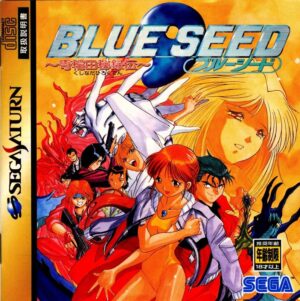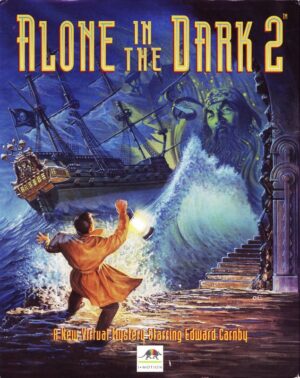Retro Replay Review
Gameplay
Shining Force III: Scenario 3 maintains the signature grid-based tactical RPG combat that defined its predecessors, offering players a familiar yet refined battle system. You command a party of diverse characters—each with unique classes, strengths, and skill trees—and position them strategically on isometric maps to exploit terrain advantages. The addition of new skills and class promotions in this final installment introduces fresh tactical considerations, encouraging experimentation with character builds and party composition.
(HEY YOU!! We hope you enjoy! We try not to run ads. So basically, this is a very expensive hobby running this site. Please consider joining us for updates, forums, and more. Network w/ us to make some cash or friends while retro gaming, and you can win some free retro games for posting. Okay, carry on 👍)
The game’s pacing strikes a solid balance between story-driven interludes and challenging skirmishes. Early missions ease you into the refined mechanics, allowing new recruits like Julian and Gracia to grow organically before facing larger, multi-stage battles. Later chapters ramp up the challenge, often pitting you against overwhelming odds that demand careful planning—using support abilities, pairing teammates, and securing chokepoints. This demands a deeper understanding of each skill set and can reward patient players with satisfying victories.
In addition to standard battles, Scenario 3 introduces a few novel map features, such as environmental hazards and shifting strongholds, which further diversify the tactical landscape. You’ll need to adapt on the fly, since enemy reinforcements or time-sensitive objectives sometimes alter the terrain mid-battle. These small but meaningful tweaks keep the combat from feeling stale, ensuring that each encounter—even those revisiting familiar foes—requires fresh strategic thought.
Graphics
Visually, Shining Force III: Scenario 3 stands out on the Sega Saturn thanks to its blend of 2D character sprites and 3D-rendered environments. The developers have polished character animations and battle effects, giving each sword slash, spell cast, and heroic pose a crisp, polished look. The vibrant palettes and detailed unit portraits contribute to a strong sense of personality, helping you form attachments to your mercenary squad.
Battle maps benefit from improved lighting and shadow effects compared to earlier entries in the trilogy. Forests sway gently, and castle interiors boast realistic brick textures, adding depth to the isometric perspective. Although you’ll occasionally spot polygonal edges and lower-resolution textures, these moments are rare and generally overshadowed by the game’s smooth frame rate and clear visual designs.
Cutscene stills and event illustrations complement the in-game engine with a more painterly style, highlighting pivotal emotional moments—especially during the climactic union of the three factions. While voice samples remain sparse, the well-timed musical stings and thoughtful camera angles ensure that the story’s most dramatic beats land with impact.
Story
Scenario 3 picks up the narrative threads from its two predecessors, weaving them together into a grand finale that rewards players who have journeyed through the entire trilogy. You continue as Julian, the earnest young mercenary, alongside the enigmatic Gracia—a boy whose mysterious origins and powers drive much of the overarching plot. As alliances shift and old rivalries resurface, the true scale of the looming threat—a malevolent god bent on returning to the world—finally comes into focus.
The pacing of the story unfolds steadily, alternating between personal character arcs and sweeping, world-spanning conflicts. Many supporting cast members from Scenarios 1 and 2 return, each contributing their own perspective on the unfolding crisis. These reunions foster emotional resonance, making the stakes feel genuinely high when you marshal all three forces for the final confrontation. The culmination of political intrigue, betrayals, and revelations builds to a satisfying crescendo—one that balances closure for individual characters with the fate of the realm.
Although newcomers may find some plot points confusing without context from the earlier scenarios, Scenario 3 provides enough in-game recaps to keep you oriented. Still, long-time fans will appreciate how the final chapter ties up lingering mysteries—particularly Gracia’s origin and the true nature of the evil deity. The narrative payoff is substantial, delivering both heart-wrenching farewells and triumphant victories in equal measure.
Overall Experience
As the final entry in the Shining Force III trilogy, Scenario 3 succeeds admirably in delivering a conclusive and emotionally resonant experience. Its refined gameplay systems, coupled with a sweeping narrative that unites all three forces, make for a memorable conclusion to what is arguably one of the Saturn’s finest RPG sagas. While it caters primarily to series veterans, its challenging battles and meaningful character progression ensure newcomers still find depth and engagement.
On the downside, the game’s steep difficulty curve in later chapters can be unforgiving for casual players, and the Saturn’s limited regional release history means it often commands premium prices on the second-hand market. Additionally, occasional load times when transitioning between maps may test your patience. However, these drawbacks are minor when contrasted with the overall quality of the strategic combat and story resolution.
Ultimately, Shining Force III: Scenario 3 stands as a fitting swan song for the series, offering players a robust tactical RPG experience wrapped in an epic storyline. If you’ve been following the trilogy or simply seeking a deep, challenging strategy game with memorable characters and a grand finale, this installment should be at the top of your wishlist. It’s a compelling testament to the artistry and ambition of 1990s console RPGs—and a must-play for genre enthusiasts.
 Retro Replay Retro Replay gaming reviews, news, emulation, geek stuff and more!
Retro Replay Retro Replay gaming reviews, news, emulation, geek stuff and more!




Reviews
There are no reviews yet.